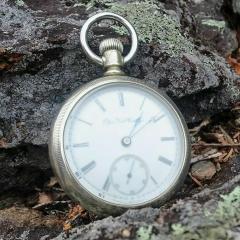-
Recently Browsing
- No registered users viewing this page.
-
Topics
-
Posts
-
Thanks for your answers! There seems to be a contradiction between these two answers, so perhaps I need to clarify. The flat and convex jewels look identical on the side facing away from the pivot shoulder. That is, there is an oil reservoir. I don't know if that changes anything but I thought it was safest to clarify since I didn't include a picture of the jewels from the opposite side.
-
unfortunately paying attention to details bumps up the cost. Which is why they shortchange on manufacturing steps if they can.
-
Thank you for your introduction and welcome to this friendly forum. We all look forward to your contributions and continued involvement. When it comes to tools buy the best you can afford a good set of watch makers screwdrivers if you look after them will last you a life time. I recommend Dumont tweezers Number 3 and number 5 for fine work, you can build up from there. You will need different strength eye glasses. Some now like to work using a microscope. Pliers the box jointed ones are best they don't go out of line.
-
By transporter · Posted
That we will, don’t really mind what the movement is, I’d like to find info on the maker, google is a little sparse and none of my reference books are coming up with anything -
Welcome to the forum, enjoy. Purchasing the best quality tools (if affordable) is the best option. However the skill of how to use them is even more important.
-








Recommended Posts
Join the conversation
You can post now and register later. If you have an account, sign in now to post with your account.
Note: Your post will require moderator approval before it will be visible.